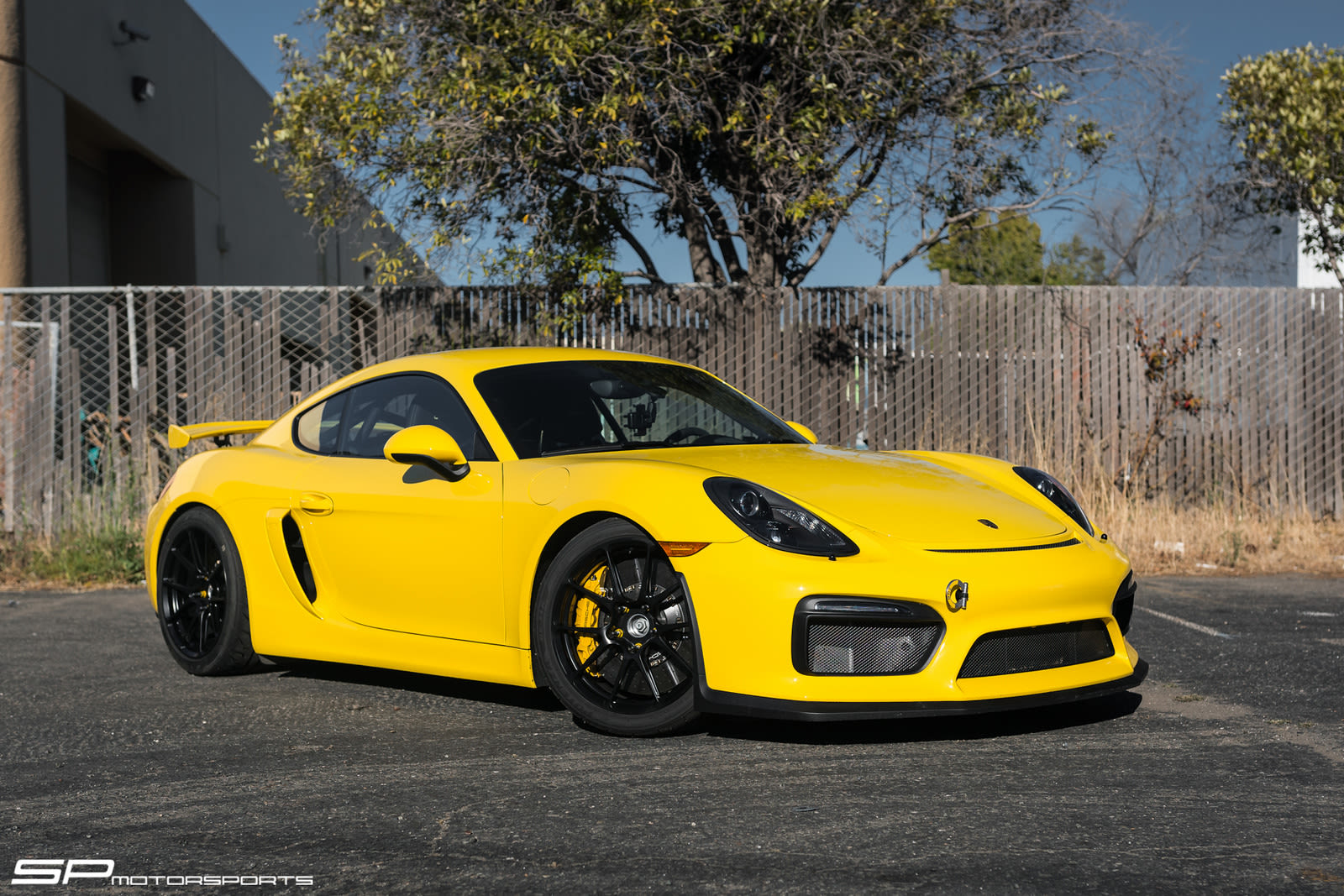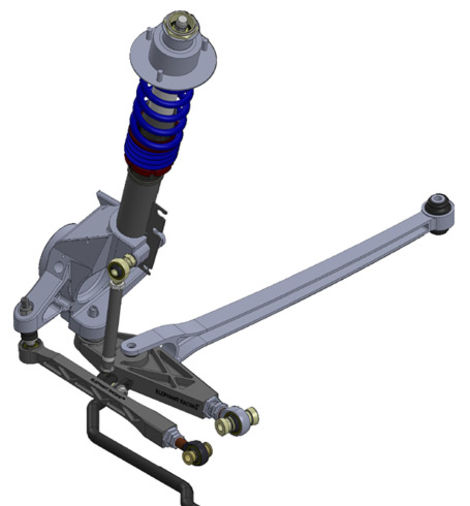
People like to bring up how Porsche has purposely limited the potential of the Cayman and Boxster by giving them less powerful engines compared to the 911.
And it isn’t unfair to bring up how the larger and more powerful engines would have easily fit into the 911's younger siblings. There are even third party companies that will take your 981 and drop a 3.8l 9a1 from a 911 in front of the shock towers.
Speaking of shock towers, there is a lesser known and more disappointing disadvantage that Porsche shafted the Cayman with... the rear suspension.
The rear suspension on the Cayman is flawed and arguably inferior to the 911 and other mid and rear engine cars.
Porsche advertises the car as having a multilink setup, but that isn’t exactly true. It doesn’t have a double wishbone setup like the upcoming C8 or a true multilink setup like the 911. It essentially has a Chapman strut suspension (of sorts).
Here’s a diagram of the Cayman suspension:

And here’s the 996/997 for comparison:

The cayman relies on the strut to control the upper portion of the hub carrier and the movements of the chassis as the car experiences changes in lateral and vertical movement. The movement isn’t controlled by upper arms like in a multilink or wishbone setup- it is instead held in place by the strut itself. What this means is that the Cayman is vulnerable to camber changes when the suspension is loaded or unloaded. This can happen in elevation changes, heavy braking, or even just corner entry and corner manuevering- as the weight shifts from left to right and up and down in the rear. The end result can be a light feeling or a loss of traction (tail happy when pushed hard).
The likely reasoning for this decision was cost savings. The rear suspension has less parts and the components themselves are basically reversed front end pieces. They upgraded the rear for the GT4 a little, but it still isn’t a true multilink. Some believe the reason was packaging related, but the aftermarket has disproved that by offering (very costly) multilink kits for the GT4.
A stock cayman with an average driver that’s going 8/10th’s likely won’t notice or care about these shortcomings. Even most editorials haven’t found issue with the stock suspension and they rave about the car’s handling.
But it’s a slightly different story on the forums and at the track, where the P-car folks upgrade tires and suspension and push the car towards 10/10th’s. Discussions about high speed cornering manners, instability during hard braking and over bumps, and occasional skittishness come up.
I very much like every iteration of the Cayman and most all p-cars in general. I even kind of like the sound of the 718's flat four. But I hope that Porsche starts to fit the Cayman with better suspension. Maybe even the C8 will drive them to upgrade some things. Maybe some day the Cayman will have double wishbones front and rear like Porsche’s race cars. Heck, maybe they will just make the 911 mid engine like the 911 RSR and then fit the front with wishbones....... ha
The Cayman is awesome, but it could certainly be better and Porsche already knows how to do it - so come on already, Porsche.